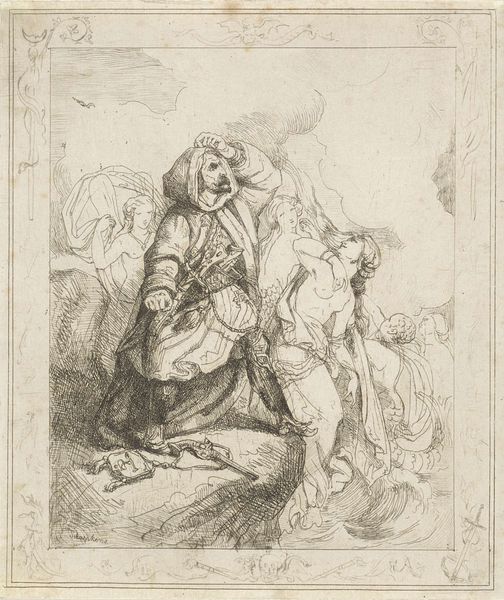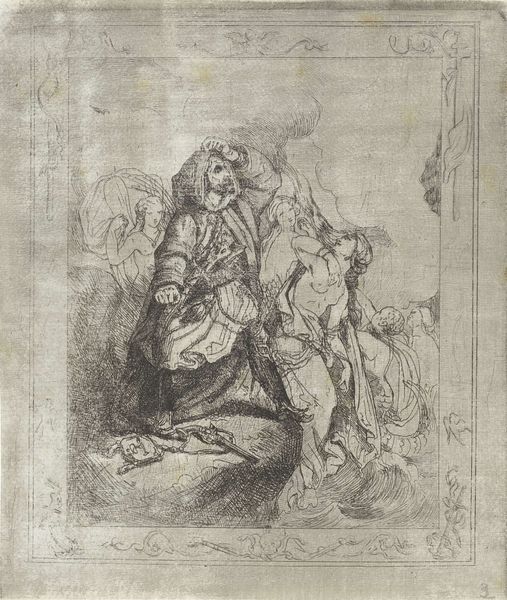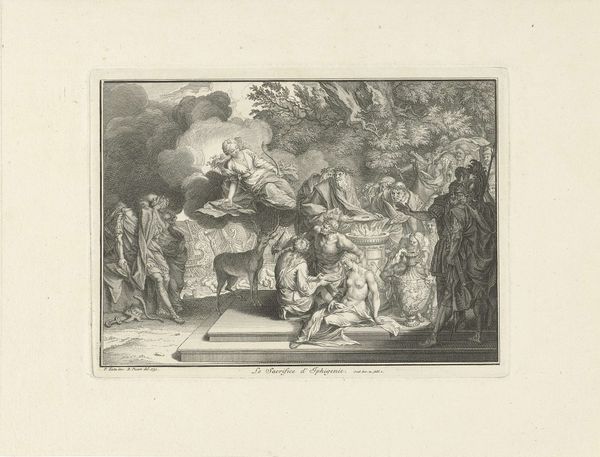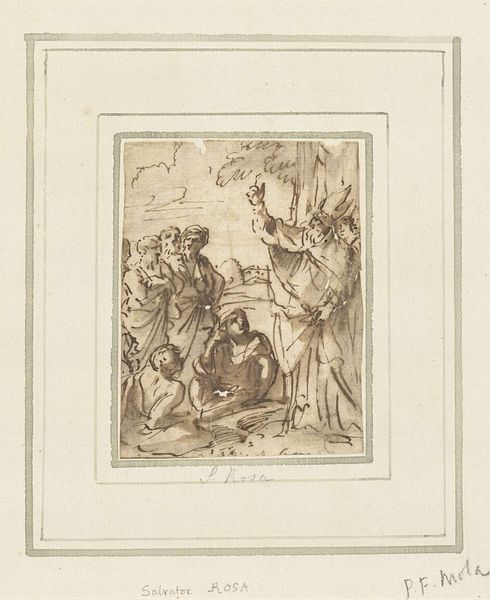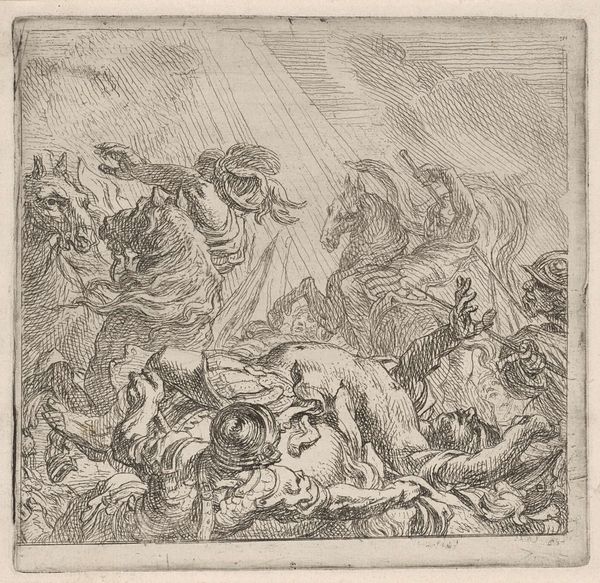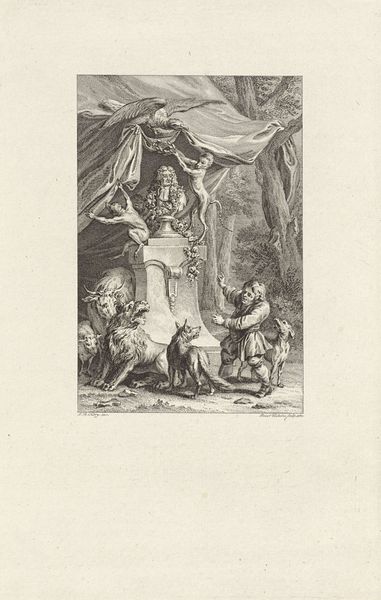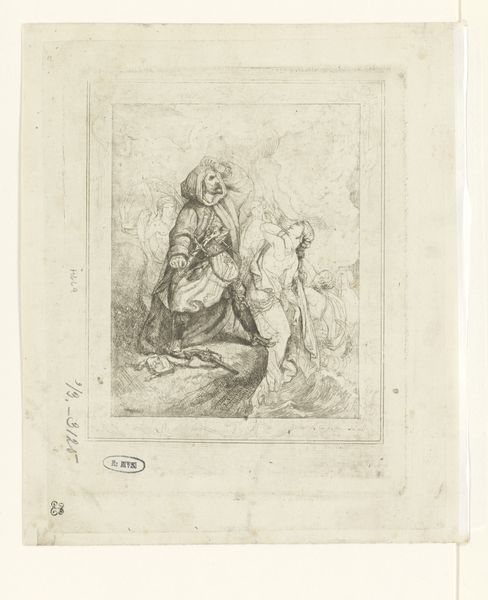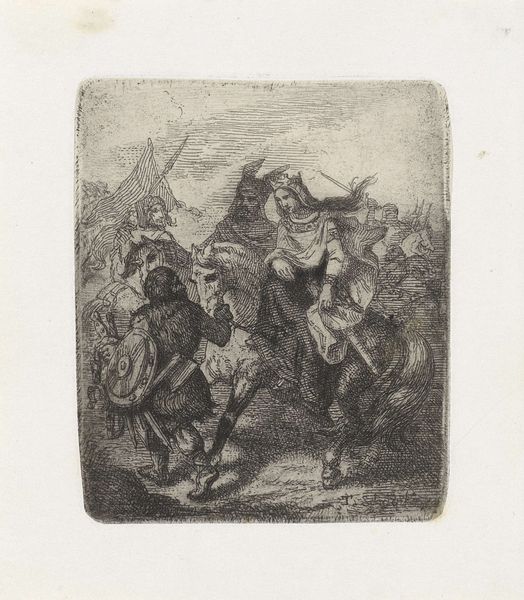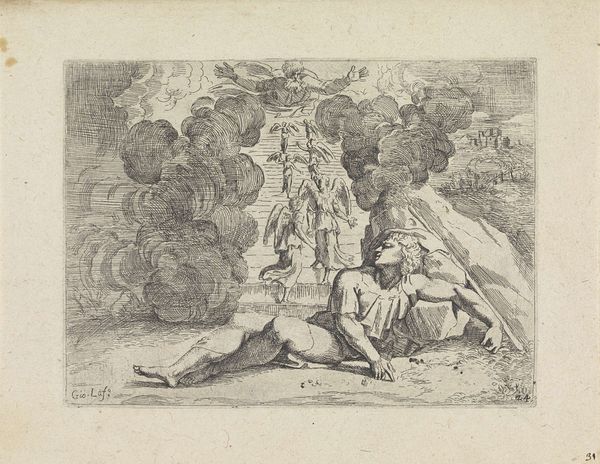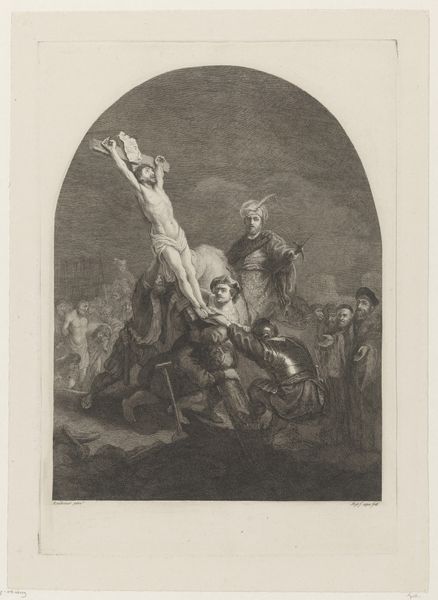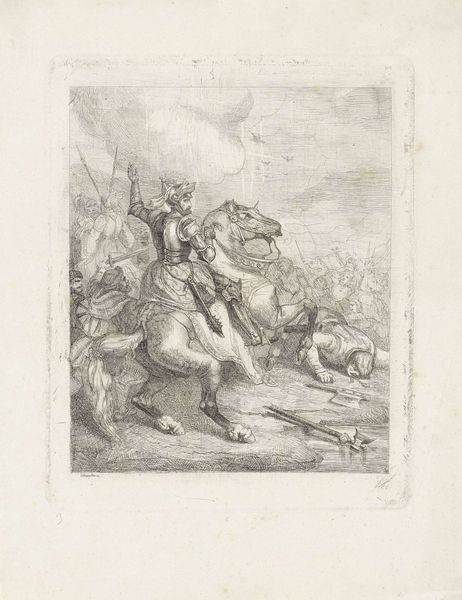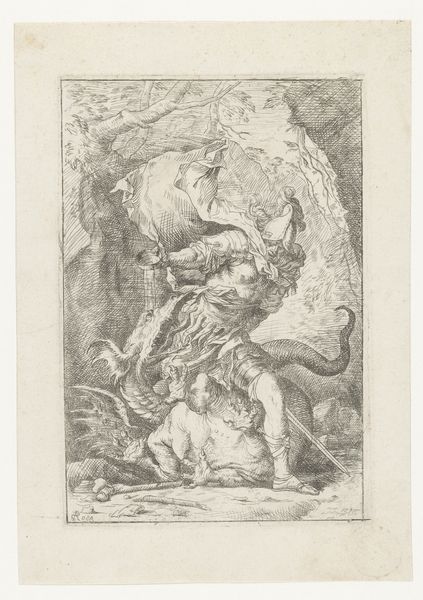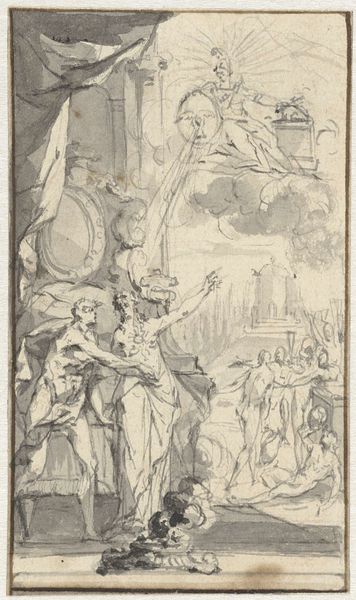
Dimensions: height 196 mm, width 157 mm
Copyright: Rijks Museum: Open Domain
Editor: Here we have "Greek Women and a Turkish Warrior," an engraving from sometime between 1825 and 1883, by Theodoor Schaepkens. It feels very dramatic and…well, violent, with the imposing figure of the warrior looming over these women. How do you interpret this work? Curator: This print offers a window into 19th-century European fascination with the Orient, especially in the context of the Greek War of Independence. Consider how the artist positions the "Turkish warrior" in relation to the "Greek women." What narratives about power, gender, and cultural difference do you think Schaepkens is constructing here? Is this image an impartial recording? Editor: It’s definitely not impartial. He seems to be setting up a clear contrast between the threatening male figure and the vulnerable women. Was there a market for these types of images? Curator: Absolutely. There was a voracious appetite for Orientalist art, and this engraving would have been easily reproducible and distributed. We should think about who was consuming these images and what ideologies they reinforced. What do you make of the women's depiction? Their expressions, their postures…do they appear individualized, or are they presented as a homogenous group? Editor: They seem more like a symbol than actual people, generalized figures representing Greek victimhood. It makes you think about how art can perpetuate stereotypes. Curator: Precisely. And how it can serve as propaganda, consciously or unconsciously shaping public opinion and justifying political actions. Does examining it through this lens change your initial reaction to the piece? Editor: Absolutely. It's not just a historical artwork, but also an artifact reflecting and shaping historical attitudes. Curator: Exactly, and by engaging with these layers, we confront not only the art of the past but also its enduring impact on the present.
Comments
No comments
Be the first to comment and join the conversation on the ultimate creative platform.
